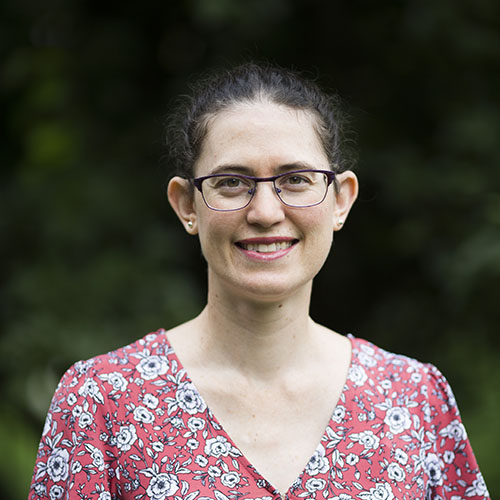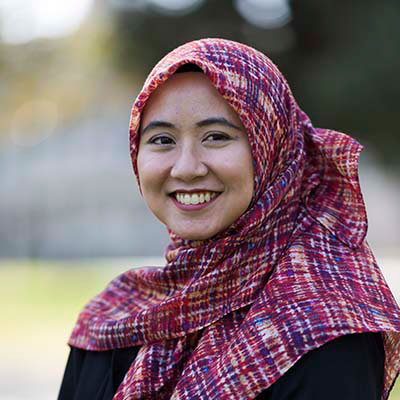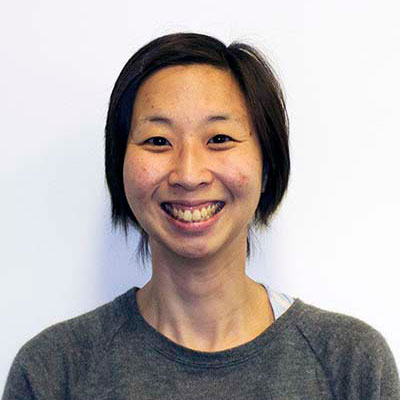This website uses cookies so that we can provide you with the best user experience possible. Cookie information is stored in your browser and performs functions such as recognising you when you return to our website and helping our team to understand which sections of the website you find most interesting and useful.
News
Celebrating women in vision research
As we celebrate International Women’s Day, here’s a snapshot of just a few of the incredible female researchers working towards new scientific discoveries at CERA.

Dr Carla Abbott, Research Fellow
Dr Carla Abbott
Working towards the development of a bionic eye.
Dr Carla Abbott is a research fellow who works in collaborative teams to investigate treatments for retinal diseases such as retinitis pigmentosa and age-related macular degeneration.
For the past six years at CERA, she has been part of a team involved in developing a bionic eye, which could help patients with advanced retinitis pigmentosa.
What is the focus of your work at CERA?
My role in the bionic eye team has been to test the safety and stability of the device using imaging and functional testing.
We are currently conducting our second generation bionic eye clinical trial in a group of four patients, with the trial to be finished late this year and a third generation device currently in development.
I have also been part of a team developing a device using retinal stimulation to help prevent retinal cell death.
Both of these projects have involved collaboration with the Bionics Institute and our commercial partner Bionic Vision Technologies.
Why are you so passionate about finding treatments for retinal disease?
As an optometrist, we see patients who are progressively losing vision from retinal disease, so it is great to be part of collaborative teams working together to answer some of the big questions regarding retinal disease, and to try and work towards treatments that will help preserve vision for longer or halt vision loss in these people.
Vision is a precious sense and with the aging population there will be a greater number of people who will require innovative treatments to enable them to keep or restore their sight, so ultimately patient outcomes are a big motivating factor.
Working at CERA is amazing as there are a great group of scientists and clinicians that collaborate enthusiastically to achieve translational results for patients.
What are you working to achieve in 2020?
Aside from continuing work with the bionic eye and neuroprotection device development, I am also working on preclinical research together with other CERA researchers to investigate the use of gene therapy and stem cell treatments for retinal disease such as retinitis pigmentosa and age-related macular degeneration.
Furthermore, I am soon to start work on an exciting new project designed to identify biomarkers and novel treatment targets for age-related macular degeneration. This work involves a large multi-disciplinary team from CERA, the University of Melbourne and the Walter and Eliza Hall Institute.

Dr Felicia Widyaputri, PhD student
Dr Felicia Widyaputri
Striving to improve visual outcomes for pregnant woman with diabetes.
Dr Felicia Widyaputri is in the final year of her PhD at CERA, and is devoted to research on diabetic retinopathy in pregnancy. Her study aims to inform new vision screening guidelines for pregnant women with pre-existing diabetes.
What is the focus of your research at CERA?
My interest is in diabetic retinopathy (DR) in pregnancy with pre-existing diabetes. DR is a leading cause of blindness among people of reproductive age and is thought to be worsened by pregnancy.
As a preventable cause of blindness, it is important to conduct timely screening so that sight-saving treatments may be instituted to prevent visual loss.
It is our challenge to design screening programmes that can identify vision-threatening DR at a treatable stage, while at the same time minimise screening burden and maximise patient adherence, especially during pregnancy.
My study aimed to inform the future development of evidence-based guidelines for DR screening and management in this growing population.
Why are you so passionate about diabetic retinopathy in pregnancy?
I am a mother with a young daughter. Seeing my daughter grow from time to time has given more colour into my life. It breaks my heart knowing that some women have a risk of losing their sight due to their diabetes, and this risk is potentially worsened by pregnancy.
Since I have been working on the DR screening program, I understand that the risk of blindness from DR can be prevented by a routine eye screening. When I got the chance to do a PhD in this topic (which incorporates motherhood and my work as a physician), I couldn’t be more grateful.
What are you working to achieve in 2020?
I am in my last year of my PhD. I determine to finish my degree this year and share my findings. I hope to get a clearer perspective of how far pregnancy affects DR, which women are most at risk to develop a sight-threatening disease, and when are the best points of time for these women to have their eyes checked.
By getting a better understanding of these issues, ultimately, we can propose new recommendations to protect our future mothers’ sight.

Dr Sandy Hung, Research Fellow
Dr Sandy Hung
Developing gene editing tools for hereditary retinal diseases.
Dr Sandy Hung is investigating genetic editing technology for Leber’s Hereditary Optic Neuropathy (LHON). This is an inherited optic nerve condition that causes devastating vision loss in patients, and is currently untreatable.
For this project, Dr Hung and her colleagues Lisa Kearns and Dr Helena Liang are investigating an approach that could correct the defective genes causing the disease.
What is the focus of your research at CERA?
I’m working as a research fellow at the Clinical Genetics Unit under Professor Alex Hewitt. My main research focus at CERA at the moment is developing gene editing tools to correct mutations of hereditary retinal diseases.
Recent revolutionary discoveries in the genetic engineering field have greatly improved our ability to modify and edit DNA.
This project aims to develop and adapt new gene editing technology to correct the three most common LHON genetic changes (mutations), providing a novel strategy for gene therapy to cure LHON.
Why are you so passionate about this area of work?
Something special about working at CERA is that we can see our research really helping patients. And in the Clinical Genetics Unit, we sometimes actually get to meet the patients.
I think this really help me stay grounded and stay motivated while doing research, where things may not always work the first time and a lot of troubleshooting is involved.
What do you hope to achieve in 2020?
For 2020, I hope to be able to successfully create the tools for this current mutation that I’m working on – in the cell lines at least.

